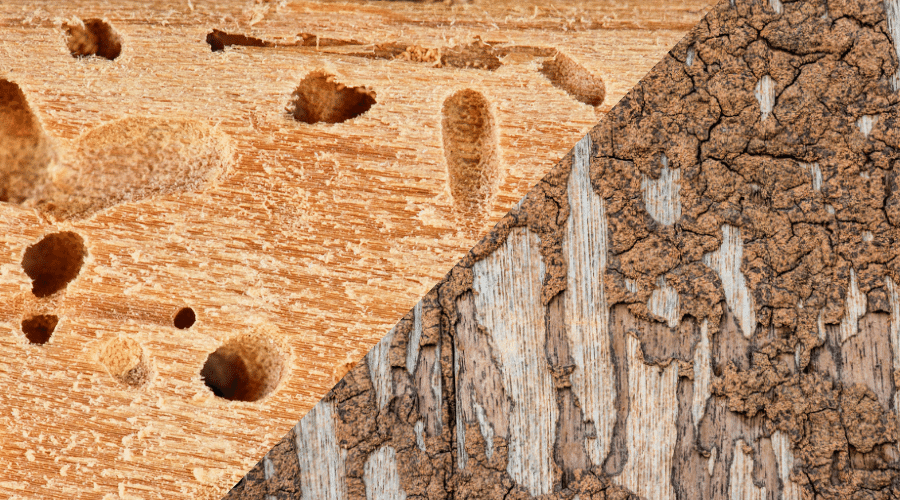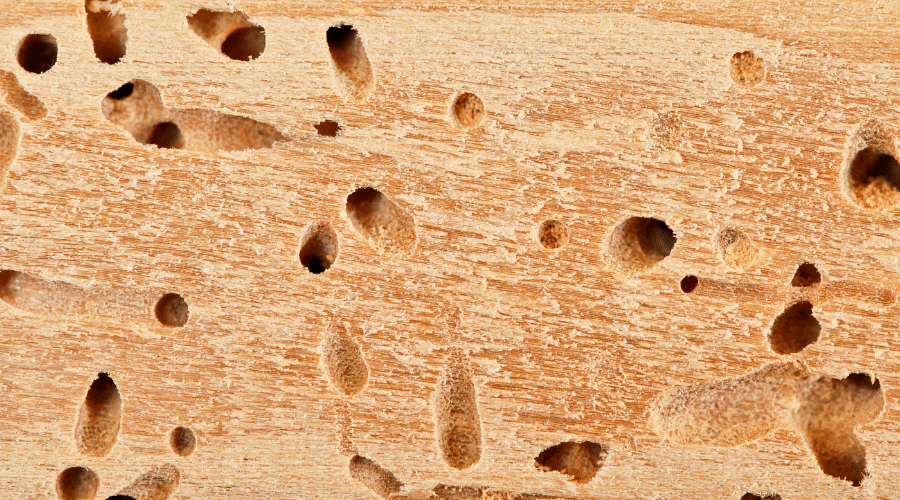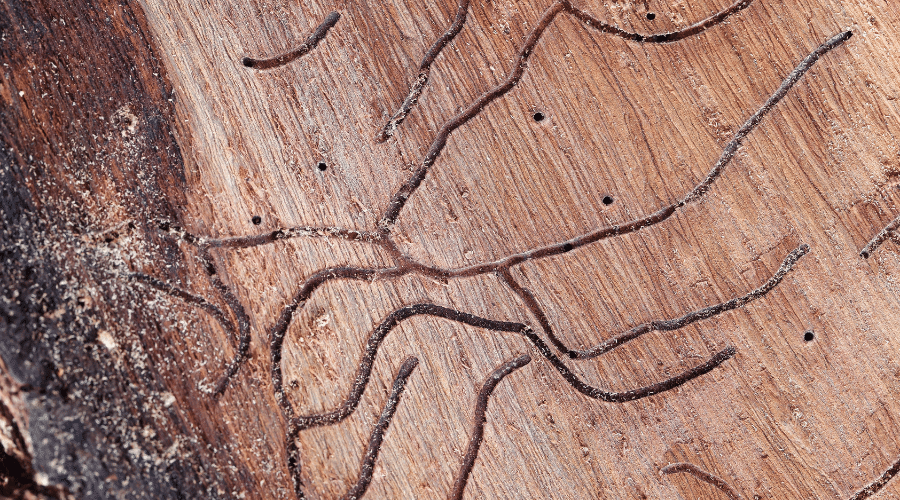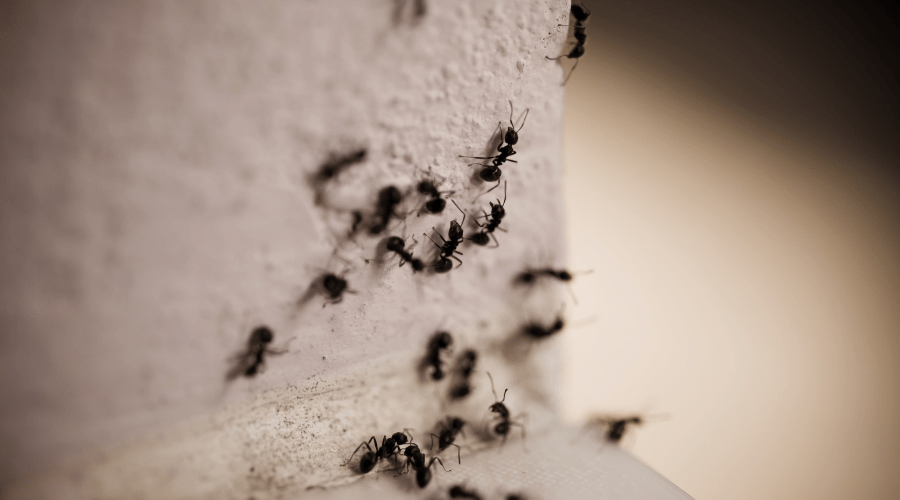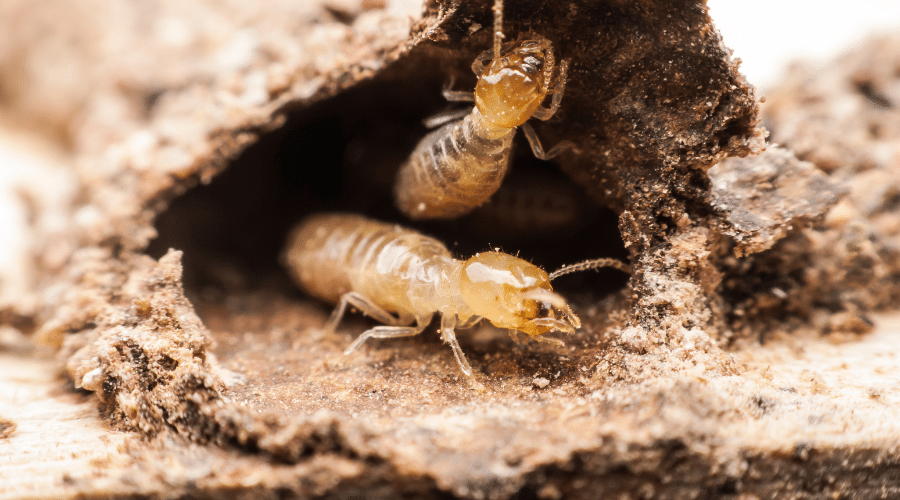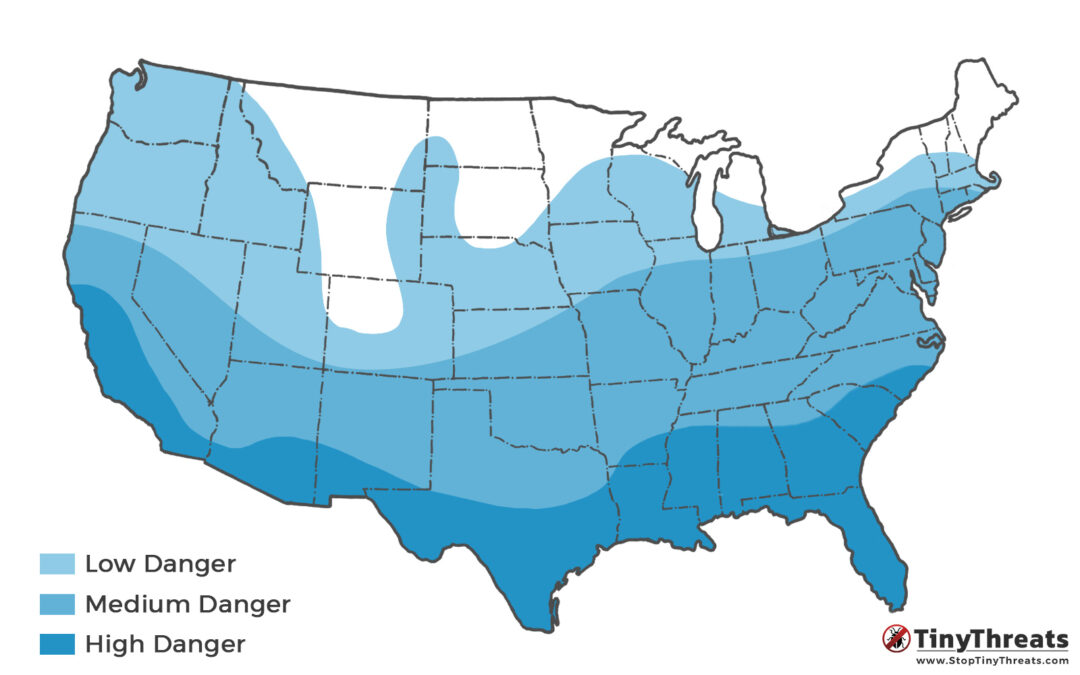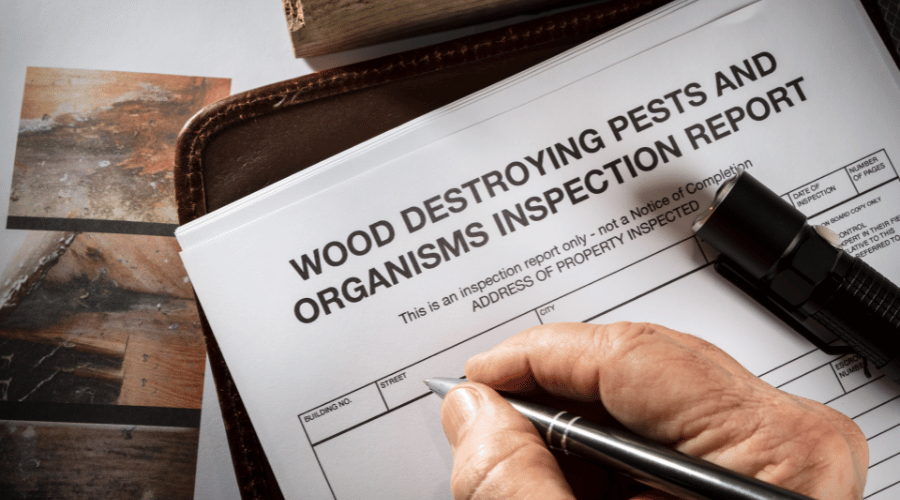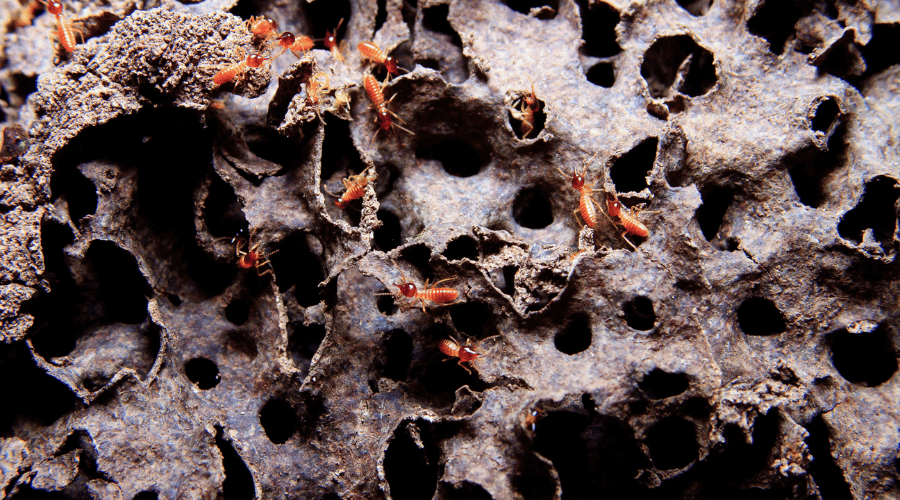If you’re seeing signs of termites in your walls, don’t panic! Termites are a common pest and there are things you can do to get rid of them. In this blog post, we’ll talk about what those signs are and what to do next.
One thing I need to stress: Don’t delay! If you ignore termites, you may face significant property damage!
So your next steps should be:
- Read this article
- Follow along and inspect your walls for signs of termites
- If you confirm termites, get a professional to do an assessment
Let’s get started.
Table of Contents
7 Signs of Termites in your Walls
If you think you may have a termite infestation in your home, it’s best to act as early as possible. Figuring out if and where you have termites is the first step – unless you want to call a professional immediately.
Carefully inspect any wooden walls, drywalls, or wood beams for these signs of termites. Many of these signs are quite small and easy to miss, so take your time!
If you notice some of these common signs definitively, you should proceed with treatment – others are more a “probable cause” sign that shouldn’t be relied upon alone.
The list is ordered roughly by the reliability of the signs.
Pinholes
Termite pinholes are small, round holes that can be found on the exterior of a home or on wooden walls inside. These pinholes can also be found on drywall, wooden beams, wooden doorframes, and rarely even on furniture.
These tiny holes are created by termites as they tunnel their way in and out of the wood framing of your house. During/after swarming season, flying (swarmer) termites mate, lose their wings, and drill into walls to create a new colony. That’s what these pinholes often are.
Termites also dig pinholes as exit holes to either leave the colony or to eject their feces, which you can see as termite dust or “frass”.
Learn more in our guide about pinholes.
Tunnels/Mud tubes on the outside
Instead of flying in and digging tunnels, subterranean termites come in from the ground and build mud tubes along the walls into your home.
These mud tubes look like tunnels made from mud/clay, about 1/4 to 1 inch wide, and often start at the foundation of the house. They are most likely to be found outside near the ground, not so much inside.
Swarmer Termites
The swarmer variant of termites are the reproductive males looking for a new place for a colony.
So if you see swarmer termites near your walls, or find their discarded wings close to your walls, they may have chosen your house as a colony.
During swarming season, a lot more of these can be seen flying around. If they are only near your home, it is likely fine. But watch your walls closely for any signs of them digging in!
Bent wooden doors or window frames
One less trustworthy sign of termites are wooden doorframes or window frames that are bent out of shape. You would not notice this with other wooden elements, but you can notice it in these frames as your door or window may not be able to close anymore.
This happens when termites eat the wood inside the frame, make it lose structural strength, causing it to bend under load.
Termite Dust
If you notice tiny powdery dust at the base of your walls, it might be termite dust. Inspect the wall carefully for pinholes.
This, too, is unreliable as brown-ish dust can be a number of things. However, if you notice this sawdust-like dirt AND see pinholes, it’s very likely termites.
Learn more in our guide about termite droppings.
Carpenter Ants near walls
Another sign you should not trust on its own is the presence of carpenter ants. Carpenter Ants are a predator of termites and will feed on them, which explains why they like to hang around where termites live.
Make sure to properly identify the ants, as “regular” ants do not indicate termites.
Also, if you find carpenter ants in your home, you might want to call an exterminator anyway – but make sure to also inspect for termites.
Termite sounds in the wall
Finally, you may be able to hear the termites working. The most common sound is a rattling sound, caused by soldier termites banging their jaws and head to warn or signal the colony.
These sounds are mainly audible at night when it’s very quiet, or when you get close to an affected wall or wooden frame.
While this sound can be a reliable sign if you hear it, it’s relatively difficult to locate and hear unless you already know where to listen. Learn more about the sounds that termites make.
How to get rid of Termites in Walls
To treat a termite problem in your walls, you have multiple options. If you want to be safe, calling a professional for an assessment is never a bad choice. They can estimate the damage and size of the infestation, and recommend the proper treatment and procedure.
For DIY treatments, you have a few options:
1) Use Termite Baits – Termite baits work by attracting termites to a trap where they eat a poison and then die. The downside is that it can take a while for the bait to kill all of the termites, so you may need to leave it in place for weeks or months. Another downside is that it might not be effective enough for a larger infestation.
2) Use Liquid Insecticide – Another way to get rid of termites is with liquid insecticide. You simply spray it on the affected areas and wait for the termites to die. The downside here is that it can be very messy, so you may need a professional for this job!
3) Get Rid of the Wood – If replaceable wooden elements (like window frames) are damaged by termites, you can get rid of the wood by replacing it with new materials. If possible, use a product that is termite resistant!
Common Questions
Should you cover a termite hole?
While it can help, covering up a termite hole will not prevent them from digging new holes. It doesn’t hurt, though, so there is no reason not to cover it up.
Small, new infestations are most likely to be halted or slowed down by covering up the termite entry holes with caulk.
Why are there random tiny holes in my walls?
Termites dig tiny holes into wooden walls or drywalls to both enter the structure and build tunnels/nests, but also as exit holes for swarmer termites and termite waste.
Do termites eat through drywall?
Termites feed on cellulose, a plant-based material, which is also an ingredient of drywall. While termites prefer wood, they will also eat through drywall and can digest it/use it as a food source.
What are the first signs of termites?
The first signs of termites are usually swarmer termites near your house and walls. Then they will “disappear” as they dig tunnels into your walls, leaving only their wings behind. If you notice any of these signs, you may be dealing with a termite infestation.
Subterranean termites on the other hand will come in from below, building mud tubes along the exterior walls near the ground, from which they then spread into the home.
How quickly do termites spread?
Termites spread very fast, both in terms of tunnel length and number. While there are articles claiming that termite queens lay up to 30,000 eggs per day, these numbers are exaggerated extreme cases – but 30 to 150 eggs per day is quite normal for regular infestations.
This means that termites can go from a small, fresh colony to a large infestation within weeks.
That’s why if you notice any signs of a termite infestation, acting fast is critical!
How long does it take to get rid of termites?
It depends. A professional exterminator may use strong chemicals and extensive treatments that kill large parts of the colony within days. On the other side, a pesticide trap may take weeks to wipe out a colony.
What’s important is that your treatment of choice kills the termites faster than they can reproduce – or it will be ineffective.
Do termites go away on their own?
Technically, yes, termites can go away on their own. However, this may be after inflicting massive damage to your property, essentially hollowing out many important parts of the foundation and walls.
Additionally, termites that leave usually can return at any time. Without treatment, your house will remain at high risk for further termite infestations!

